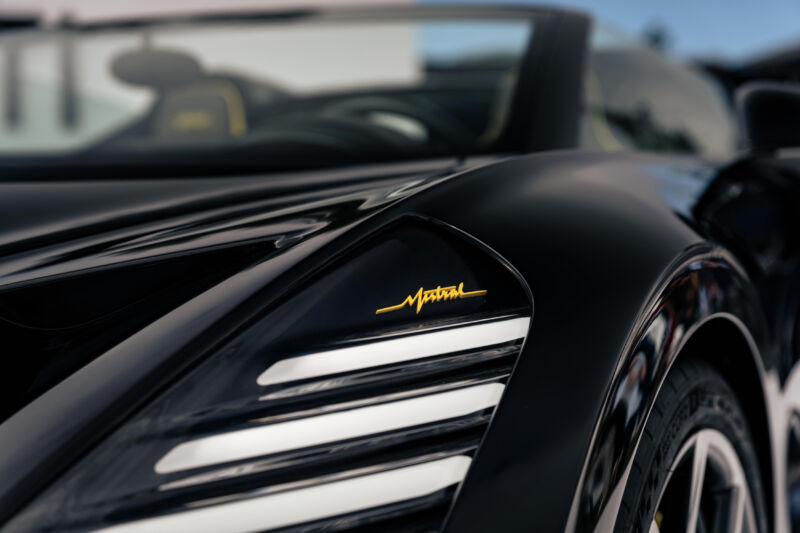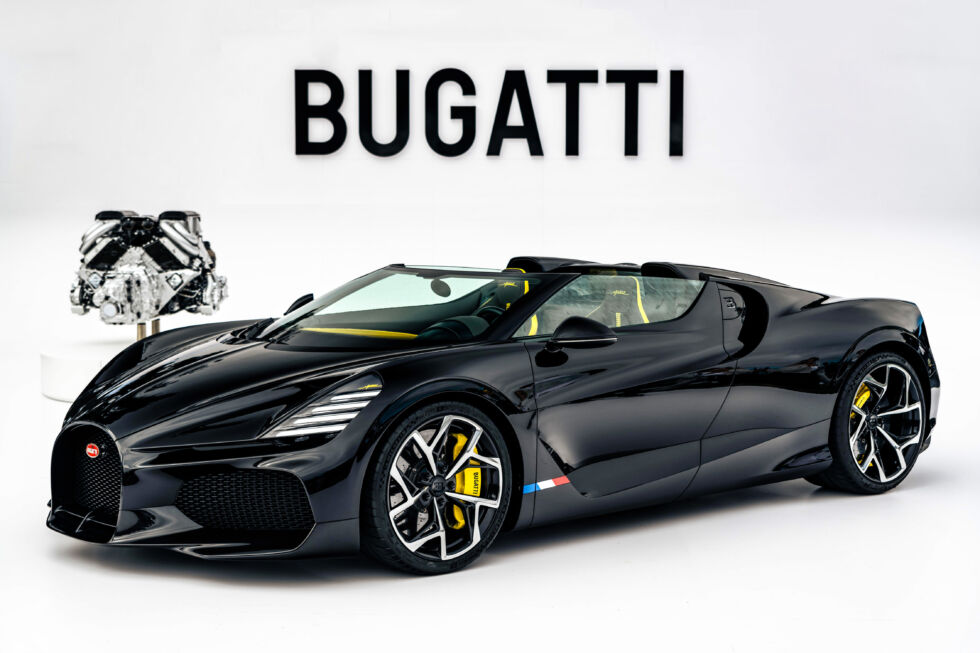
PEBBLE BEACH, Calif.—We're big fans of electric propulsion here at Ars. Electric motors are smooth, quiet, and efficient, but they can also generate enormous amounts of torque almost immediately, which means they offer something for all tastes. Electrification has already made its mark on the high-end hypercar; EVs like the Pininfarina Battista and Rimac Nevera offer truly high-end specs, whether in power output or price tag. Electrification is even coming for Bugatti, which is on something of a farewell tour for its W16 engine.
We caught up with Bugatti's deputy design director, Frank Heyl, at Monterey Car Week last summer to get his take on how going electric will (or won't) change Bugattis.
Throughout its long history (and at the risk of sounding like Bart Simpson delivering a bad book report), Bugatti has often had a thing for contrasts. In its early days, its cars were engineering marvels, but they were designed so they could be built by the relatively unskilled laborers working for Ettore Bugatti. In its first incarnation, the company turned high-tech with an all-carbon construction, yet contemporary tests often complained about it being too heavy. And then came Ferdinand Piech, who wanted a road car with 1,000 horsepower and a top speed of 260 mph but one tame enough that his grandmother could drive it to the shops.
Now, Bugatti is majority-owned by the electric vehicle specialists Rimac in a partnership with Porsche (which in turn owns a stake in Rimac as well), and like most other automobile brands, it's on the road to sustainability. Its factory in Molsheim, France, has run on solar and green biogas for the last few years, and only 2 percent of the factory's waste escapes recycling. At the same time, the company is still making enormously expensive cars for the very few.

Bugatti has sold all the remaining W16-engined cars it will ever build, but we've yet to see the company's take on an EV. That electrification work will take place in a new design hub in Berlin, although the cars will still be hand-built in Molsheim. The last of the road-going W16s is the open-top Mistral, which looked bold in glossy black against the stark white background of Bugatti's pavilion at Pebble Beach.
The last W16
"This engine and this block specifically—the eight liter capacity, 70.2 degree V and 90 degree overall V—this kind of block has been with us the whole time," Heyl told me. "It's gone through several iterations of development, and now we have the highest grade, 1,600 horsepower." Installed in the Chiron Super Sport 300+, that engine was sufficient to set a top speed of more than 300 mph.
"So we thought, 'What is the appropriate way to let this phase out now with one last use case, and how can you give the customer the biggest sensation?' And it became immediately apparent that we needed to do an open-top car," he explained.
Driving a Mistral should be a visceral experience, with the large-capacity turbocharged engine rumbling and whooshing behind you. "You see the air intakes are just behind your back, just behind your ears. So the biggest acoustic... let's say "sensation" is to, one more time, experience this masterpiece with 64 valves," Heyl said.
reader comments
86